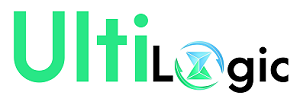Timesheet management has always been a critical component of workforce management, ensuring accurate tracking of employee hours, productivity, and payroll calculations. In 2025, businesses are experiencing a significant shift in how timesheet software operates, driven by technological advancements, remote work trends, and a growing focus on efficiency and compliance.
Understanding the latest timesheet software trends is essential for organizations seeking to optimize workforce management, reduce administrative overhead, and maintain accurate records.
Cloud-Based Timesheet Solutions
Cloud technology continues to dominate the timesheet software landscape. In 2025, businesses will increasingly prefer cloud-based timesheet systems over traditional on-premises solutions. Cloud platforms allow real-time access to timesheet data from anywhere, facilitating remote work and hybrid workforce management.
Employees can log hours, request leave, and update tasks through web or mobile apps, while managers can monitor approvals, productivity, and project progress in real-time. The cloud also ensures data security, automated backups, and seamless software updates, reducing IT overhead.
Integration with Payroll and HR Systems
Modern businesses are prioritizing timesheet software that integrates seamlessly with payroll and HR systems. Integration eliminates the need for manual data transfer, reducing errors and ensuring accurate pay runs.
By linking timesheets to payroll systems, companies can automate overtime calculations, deductions, and leave balances. Integration with HR systems also allows for better resource planning, attendance tracking, and employee performance monitoring, enabling data-driven decision-making.
AI and Automation in Timesheet Management
Artificial Intelligence (AI) is transforming timesheet management in 2025. AI-powered features, such as automatic time tracking, predictive analytics, and anomaly detection, streamline the timesheet process.
For example, AI can automatically log employee work hours based on device usage, calendar events, or project activity, reducing manual entry and errors. Predictive analytics help managers forecast project timelines, budget needs, and resource allocation, while anomaly detection flags unusual entries for review.
Mobile-First Approach
With the rise of remote and hybrid work, mobile-friendly timesheet apps have become essential. Employees now expect to submit timesheets, log hours, and track tasks directly from their smartphones or tablets.
Mobile-first solutions also support push notifications and reminders for timesheet submissions, ensuring compliance and timeliness. For businesses with field staff or distributed teams, mobile apps provide convenience, flexibility, and real-time data access.
Enhanced Reporting and Analytics
Timesheet software in 2025 increasingly emphasizes advanced reporting and analytics capabilities. Businesses can now generate detailed reports on employee productivity, project progress, labor costs, and resource utilization.
Visual dashboards and customizable metrics allow managers to identify inefficiencies, optimize staffing, and make informed operational decisions. By leveraging analytics, companies can also improve project planning and budget forecasting, ultimately increasing profitability.
Compliance and Security Features
Regulatory compliance and data security remain top priorities. Modern timesheet software includes features to ensure adherence to labor laws, overtime regulations, and data privacy standards.
Automated alerts for missed submissions, overtime limits, and compliance violations help businesses avoid legal penalties. Additionally, encryption, role-based access, and secure cloud storage protect sensitive employee data from breaches and unauthorized access.
Conclusion
Timesheet software is evolving rapidly in 2025, driven by technology, automation, and changing workplace dynamics. By embracing modern timesheet software, organizations can enhance productivity, optimize resource allocation, and maintain a competitive edge in a dynamic business environment.

